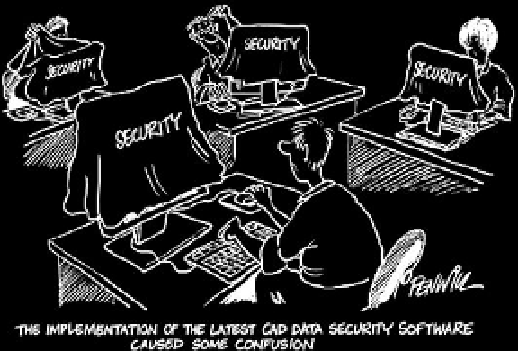Information Technology Reference
In-Depth Information
Fig. 3.14. With the widespread use of
the Internet, online security is becoming
one of the most important aspects of
present-day computing.
Virtual memory
Besides managing the file store, where the files are kept on the hard disk, the
operating system also manages the computer's main memory. Computer mem-
ory is expensive, and typically a computer has much less main memory than
its address space can support. A computer's
address space
represents the range
of numbers that can be used for addressing memory locations. For example, if
the CPU registers are 32 bits wide, they can hold 2
32
different bit patterns. This
is the largest possible address space and is usually referred to as 4 gigabytes,
because 2
32
is 4,294,967,296, or just more than four billion (a thousand million).
G stands for
giga
, a prefix that means one billion. Nowadays users can write
programs without worrying about the limitations of main memory. Clever
vir-
tual memory
software allows user programs to assume they can employ all of
the addressable memory even though the main memory supports far fewer
real addresses. The virtual memory creates this illusion by moving blocks of
memory called “pages” back and forth between the hard disk and the main
memory. This leads to a new type of interrupt called a
page fault
, which occurs
when the page that the program needs is not yet in main memory. The oper-
ating system then must suspend the program so that the required page can be
copied into main memory from the hard disk. To make room for this page in
main memory, another page must be swapped out. Memory mismanagement
is one of the most common causes of “crashes” and there are many elaborate
strategies for deciding which page is best to move out.
Security
One vital function that an operating system must provide is security (
Fig. 3.14
).
For each user the operating system must maintain the confidentiality and
integrity of the information they have stored on the computer. A first step
toward this goal is to identify permitted users by a password so that they must
use this password to log into the computer before they are allowed access to
any of its resources. The operating system must keep track of the users and
passwords and ensure that only those files associated with an authorized user
can be accessed and manipulated by that user. Alas there is now a thriving
subculture of
hackers
, skilled programmers who try to subvert these security

Search WWH ::

Custom Search